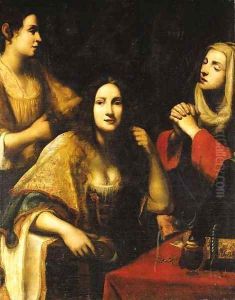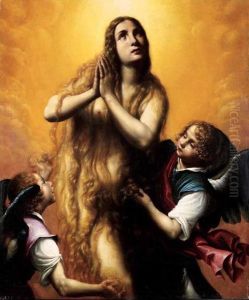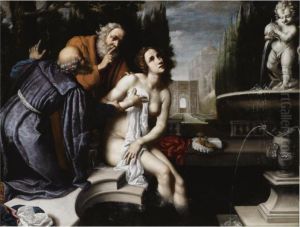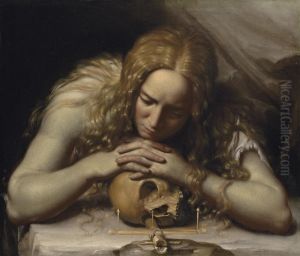Francesco Lupicini Paintings
Francesco Lupicini, an Italian painter of the Baroque period, was born in 1583 in Florence, Italy. His life and career were deeply rooted in the rich artistic tradition of Florence, a city that was a cradle of the Renaissance and home to many artists whose work defined an era. Lupicini, though less well-known than his contemporaries like Caravaggio or Bernini, contributed significantly to the Baroque movement, which emphasized dramatic, often emotional expression, and made extensive use of contrast in lighting, a technique known as chiaroscuro.
Lupicini's early life is somewhat obscure, but it is known that he trained under the guidance of Domenico Cresti, also known as Passignano, an accomplished painter of the time. This apprenticeship was crucial in shaping Lupicini's style, which blended the dynamism and vitality characteristic of the Baroque with a keen attention to detail and color that he likely inherited from his mentor's influence.
Throughout his career, Lupicini was commissioned to work on various churches and palaces in Florence and its surroundings. His works often featured religious themes, a common focus for many artists of his time due to the Counter-Reformation, which sought to reaffirm the spiritual and political power of the Catholic Church through art. Lupicini’s paintings are characterized by their vibrant colors, dynamic compositions, and the emotional intensity of the figures depicted.
Despite his contributions to the Baroque movement and the Florentine art scene, Francesco Lupicini's work did not gain the same level of recognition as some of his peers. After his death in 1651, his name faded into relative obscurity, overshadowed by the giants of the art world. However, recent scholarship has begun to reevaluate his work, acknowledging his skill and the subtle nuances of his approach to Baroque art.
Today, Francesco Lupicini's paintings can be found in several Italian churches and collections, where they continue to be studied and appreciated for their artistic value and historical significance. His legacy, while not as prominent as that of some of his contemporaries, remains an important part of the tapestry of Italian Baroque painting, offering insights into the complexities and nuances of this dynamic period in art history.



